- Please describe your biggest challenge during the past six months.
One of my biggest challenges was trying to implement the Peace Corps' primary goal of Capacity Building through trainings for CPs; it was like pulling teeth. As a non-profit that worked with vulnerable children that receives its funding through monetary and material donations from foreign organizations, it seemed to me that if a project idea did not have an immediate end result of a physical gain (i.e. money or material goods), then they were not interested in the training. Learning a new skills set (i.e. learning English or how to start up a small business), in which the end result was applying the new skill on your own, had no takers at this HCA. Maybe the reason lay in the type of agency or because of their lack of exposure to training and its benefits (as compared to a formal school where trainings are setup by the local Education Center) that was the cause of their lack interest.
Secondly, I did not really having a counterpart to work side by side with on projects. My only English-speaking CP, like most of my CPs, had a totally different job responsibility and work schedule than myself. My CPs are orphanage caretakers that worked a full day schedule plus a rotated a two overnight stay per week at the orphanage Mon-Sat while I worked a 9am-5pm workweek Mon-Fri. Thus, it was hard to coordinate time to work on projects together. She was merely my glorified translator.
- Over the past six months what have you done, or what ideas have you generated, to promote a better understanding of Mongolians on the part of Americans, both during and upon completion of your service? (Peace Corps' Goal 3)
I hope my daily interaction with my CPs and children have caused them to understand not only me but also my Western mindset and my "American" ways of approaching projects (e.g. potluck community meetings in my home, researching information through the internet, networking through meeting new people through people you already know) and teaching/training methods. Socially, I have invited my CPs over to my home for dinners and conversation (broken Mongolian combines with hand gestures and animated facial expressions goes a long ways). I have found that the key to quickly getting projects accomplished and ideas across is if you first build a personal connection with the people you are trying to work with.
- If you left Peace Corps tomorrow, what would you miss most about living and working in Mongolia?
I would miss the ancient monasteries and the landscape; being struck in awe at the magnificent of beauty in the rock formations, the endless blue sky, the rolling hills, the high mountains, the winding rivers, and the peacefulness of it all. Mongolia is so unique in its nomadic (aka: simple) way of living; I would miss that also. And I would miss my children dearly.
What I wouldn't miss is the daily smell of urine in my stairwell, the backup pipes in my poorly made Russian building that gives off a putrid smell, the careless littering combined with lack of an organized government trash pickup system, and the very, very packed meekers in an 8+ hour dirt road trip.
Burengiin Nuruu Mountain Range

History of the Peace Corps Program in Mongolia
Country Assignment
- Country: Mongolia (Outter)
- Program: Youth Development
- Job Title: Life Skills Trainer (also: English teacher, Child Caretaker, Fund Raiser, Events Organizer, and IT Trainer)
- Orientation (Staging in Atlanta, GA): May 31-June 2, 2007
- Pre-Service Training (in Darkhan and Sukhbaatar, Mongolia): June 3-August 18, 2007
- Dates of Service (in Darkhan at Sun Children formerly "Asian Child Foundation" - a non-profit, non-government Japanese funded orphanage of 37 Mongolian children opened since 8/25/2005): August 19, 2007- August 18, 2009
Location and Nature of the Job
CYD Volunteers are placed in provincial centers with population between 15,000 and 70,000. A few CYD Volunteers are placed in Ulaanbaatar, where the population is reaching 1 million. I will work with youth-focused NGOs, children’s centers, schools, and civil society organizations to address major challenges confronting Mongolian youth today, such as education, life skills, employability, and leadership. In addition, the work will involve workshops and presentations at schools and community agencies and will entail traveling to other outlying communities that have less access to information and training. Given the vast distances in Mongolia, these visits will often require overnight stays.
Wednesday, April 16, 2008
Questions from the Bi-Yearly Peace Corps Progress Report Questionnaire
Recommended Books on Mongolia
- “Dateline: An American Journalist in Nomad’s Land” by Michael Kohn, 2006.
- "Ghengis Khan and the Making of the Modern World” by Jack Weatherford, 2004.
- “Riding Windhorses” by Sarangerel, 2000.
- “Twentieth Century Mongolia” by Baabar, 1999.
Recommended Mongolian Movies
- The Story of the Weeping Camel (2004), Die Geschichte vom Weinenden Kamel
- Mongolian Ping Pong (2005), Lü cao di
Notable Articles on Mongolia
Informational Links
- Peace Corps - Mongolia
- International Calling Card (Cheap!)
- Current Mongolian News
- Current Weather Conditions in Ulannbaatar, Mongolia
- A Tour of Mongolia Through Photography
- History of Mongolia
- Mongolian Culture
- Mongolian Lanuage
- Weather and Climate In Mongolia
- Travel Guide to Mongolia
- Official Tourism Website of Mongolia
- Asia.com - Cheapest Airfare to Asia
- MIAT - Mongolian Airlines
- Currency Converter
- Entry and Visa Requirements





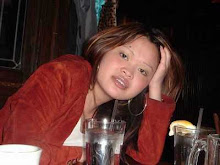



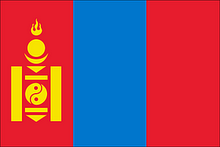
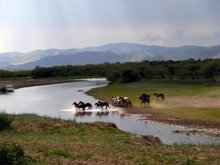
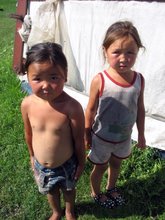
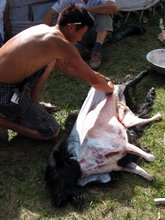
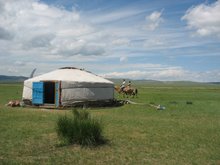

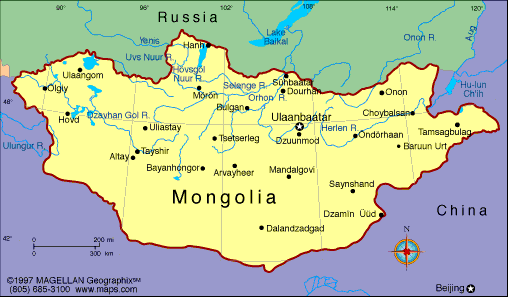
No comments:
Post a Comment